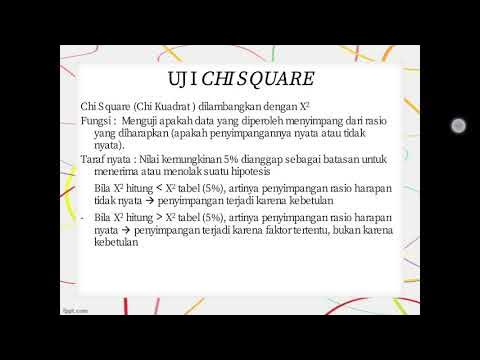HEREDITAS - BIOLOGI - KELAS 12
Summary
TLDRThis educational video script discusses Mendelian genetics, focusing on monohybrid crossbreeding and its outcomes. It explains concepts like complete dominance, incomplete dominance (intermediate inheritance), and different genotypes leading to varying phenotypes. The script also covers dihybrid crosses, gene interactions like epistasis and pleiotropy, and phenomena such as genetic linkage, crossing over, and genetic recombination. It uses examples like plant height, flower color in linaria, and rabbit fur color to illustrate these principles, providing a comprehensive overview of basic genetics.
Takeaways
- 🌱 Monohybrid cross involves breeding individuals with one contrasting trait, such as tall and short plants.
- 🔬 Dominance can be complete or incomplete; complete dominance results in all offspring showing the dominant trait, while incomplete results in a blend of traits.
- 📊 The phenotypic ratio in a monohybrid cross with complete dominance is typically 3:1 (dominant to recessive).
- 🍃 In incomplete dominance, the F1 generation shows an intermediate phenotype, and the F2 generation has a 1:2:1 ratio.
- 🌼 Dihybrid crosses involve two contrasting traits, like round and wrinkled seeds, or green and yellow color.
- 🧬 Mendelian inheritance can be affected by factors like epistasis, where one gene masks the effect of another, and polygenic inheritance, affecting the same trait.
- 🔄 Law of Independent Assortment is not always followed due to genetic interactions, leading to different phenotypic ratios.
- 🔄 Gene linkage occurs when genes are close together on the same chromosome, often resulting in the same gametes.
- 🔄 Genetic recombination can occur due to crossing over during meiosis, creating new combinations of traits.
- 🐰 Multiple alleles can influence a single trait, as seen in rabbits with various ear and fur color combinations.
Q & A
What is meant by monohybrid cross in genetics?
-A monohybrid cross is a breeding experiment between two parents that differ in only one genetic trait.
What are the two types of dominance in monohybrid cross?
-The two types of dominance are complete dominance and incomplete dominance. Complete dominance means one trait completely masks the other, while incomplete dominance results in a blend of the two traits.
How is the genotype represented in a complete dominance scenario?
-In complete dominance, the genotype is represented with the dominant trait first followed by the recessive trait, using uppercase for dominant and lowercase for recessive alleles.
What is the phenotypic ratio in the F2 generation for a complete dominance monohybrid cross?
-The phenotypic ratio in the F2 generation for a complete dominance monohybrid cross is typically 3 dominant to 1 recessive trait.
Can you explain the concept of intermediate inheritance in the context of the script?
-Intermediate inheritance, or incomplete dominance, occurs when the offspring display a phenotype that is a blend of both parents' traits, resulting in an intermediate phenotype.
What is the difference between a monohybrid and a dihybrid cross?
-A monohybrid cross involves traits controlled by one gene pair, while a dihybrid cross involves traits controlled by two different gene pairs.
What is the expected phenotypic ratio for a dihybrid cross with complete dominance?
-The expected phenotypic ratio for a dihybrid cross with complete dominance is 9:3:3:1, representing the combinations of dominant and recessive traits for two gene pairs.
What is meant by epistasis in genetics?
-Epistasis is a phenomenon where the effect of one gene is masked or modified by another gene. It occurs when one gene covers up the effect of another gene.
How does the script explain the concept of genetic linkage?
-Genetic linkage is explained as genes being located on the same chromosome and close together, which can result in them being inherited together more often than not.
What is the significance of genetic recombination as mentioned in the script?
-Genetic recombination occurs during meiosis and involves the exchange of genetic material between homologous chromosomes, leading to new combinations of traits in offspring.
What is the role of the F1 generation in a genetic cross?
-The F1 generation is the first filial generation resulting from the cross of two parents. It is used to determine the genotypes and phenotypes that will be expressed in subsequent generations.
Outlines

Cette section est réservée aux utilisateurs payants. Améliorez votre compte pour accéder à cette section.
Améliorer maintenantMindmap

Cette section est réservée aux utilisateurs payants. Améliorez votre compte pour accéder à cette section.
Améliorer maintenantKeywords

Cette section est réservée aux utilisateurs payants. Améliorez votre compte pour accéder à cette section.
Améliorer maintenantHighlights

Cette section est réservée aux utilisateurs payants. Améliorez votre compte pour accéder à cette section.
Améliorer maintenantTranscripts

Cette section est réservée aux utilisateurs payants. Améliorez votre compte pour accéder à cette section.
Améliorer maintenantVoir Plus de Vidéos Connexes

Pewarisan Sifat Kelas 9 SMP (Part-2) Persilangan Monohibrid

Neo-Mendelian genetics and the virtual fly lab

Uji Chi Square (Part 1) | Genetika Tanaman

Genetics - Understanding Crosses - Lesson 6 | Don't Memorise

NON-MENDELIAN GENETICS: SEX-LINKED TRAITS | SEX INFLUENCED TRAITS | SEX-LIMITED TRAITS | SCIENCE 9

Penjelasan software CGS
5.0 / 5 (0 votes)
